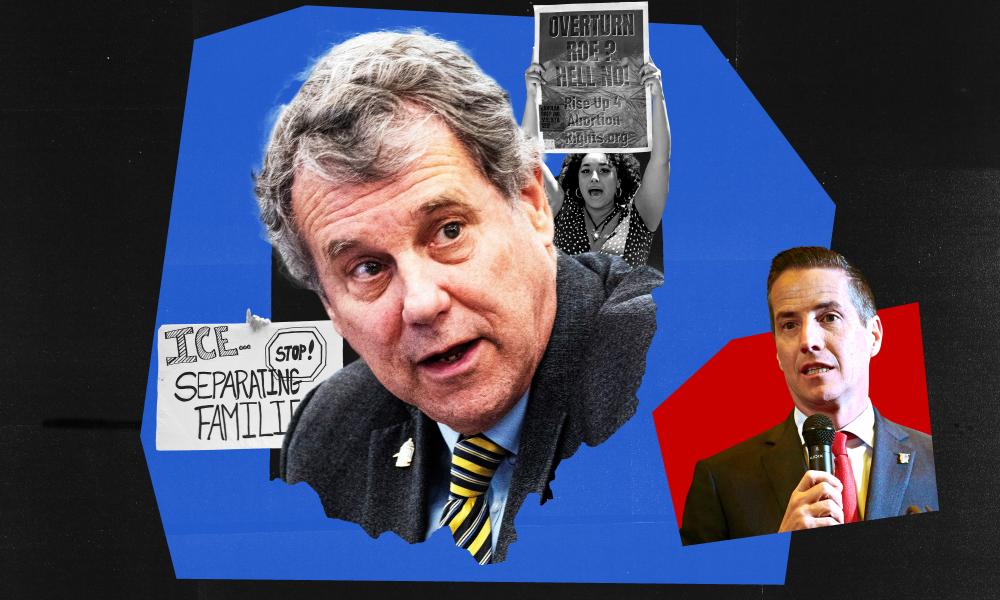When Sherrod Brown was elected to the U.S. Senate in 2006, Ohio was considered a reliable Democratic stronghold, thanks in large part to its large urban populations and a robust manufacturing sector. This trend continued as Barack Obama secured victories in the state for both the 2008 and 2012 presidential elections. However, over the years, Ohio has experienced a demographic shift towards an older, whiter, and more conservative population, leading to a decline in the strength of the Democratic Party within the state. Manufacturing jobs have dwindled, and population stagnation has set in. Presently, Brown stands as the lone Democrat holding a statewide office in Ohio. His upcoming Senate election against Bernie Moreno, a former luxury car dealer, is seen as pivotal not only for Ohio’s political landscape but for the national balance of power, as maintaining Brown’s seat is essential for Democratic control of the U.S. Senate.
The significance of this election is amplified by the Republican Party’s stronghold in Ohio’s political apparatus— they maintain a supermajority in both state legislative chambers and hold key offices including the governorship. With JD Vance as Ohio’s other U.S. senator, GOP strategies, especially gerrymandering, have put Democrats at a disadvantage, making Brown’s potential re-election a noteworthy feat. What makes this election more complex for Brown is that he has never run in a year when Donald Trump was on the ballot, which could skew the dynamics significantly. Trump’s endorsement of Moreno has energized parts of the electorate that are keen on maintaining loyalty to the former president, such as voters like James Spencer, a resident of Moraine, Ohio, who is disillusioned with the economic changes in his community.
Spencer’s discontent centers around the impact of manufacturing job losses, including the displacement of a General Motors plant by a Chinese manufacturer, which has become a focal point of nostalgia and community identity for locals. This sentiment has found a receptive audience in both Trump and Moreno, who capitalized on grievances related to the changing economic landscape and the loss of blue-collar jobs. Brown, on the other hand, has positioned himself as a defender of workers’ rights, attempting to distance himself from the Biden administration while still advocating for local industry protections. Political analysts note that despite his lengthy political career, Brown’s ability to garner votes from the labor sector may play a crucial role in the race, particularly as he shares some of Trump’s stances on local manufacturing and farming support.
As the campaign progresses, both candidates are launching targeted advertisements to sway voters. Brown’s ads, which highlight his tough-on-immigration stance and portray him as a populist champion, seek to appeal to a historically working-class demographic. In contrast, Moreno’s campaign has received substantial funding from outside sources, including a $40 million infusion from cryptocurrency industry PACs, and utilizes aggressive tactics that link Brown to the unpopular aspects of the Biden administration. Polling data is mixed, with some results indicating a slight edge for Moreno, while others suggest a near tie, underscoring the competitive nature of this election.
However, Moreno’s political history and statements have not been without controversy. He has faced backlash for settling multiple wage-theft lawsuits involving his former car dealership and has made remarks regarding women’s reproductive rights that have been received poorly, particularly in light of voters recently enshrining abortion rights into Ohio’s constitution. This backdrop has galvanized Democratic voters, reflecting an increased motivation to mobilize against Republican candidates due to heightened concerns over reproductive rights and other societal issues that emerged in the wake of the Supreme Court’s decision on Roe v. Wade.
As the election approaches, analysts emphasize that the outcomes in urban centers like Cleveland, Columbus, and Cincinnati will be decisive. Brown’s campaign will rely on high voter mobilization in traditionally Democratic areas to counterbalance the turnout among rural and small-town voters, which typically leans Republican. The brewing energy surrounding progressive issues, alongside voter dissatisfaction stemming from recent GOP scandals, presents both a challenge and an opportunity for Brown. For voters like Spencer, who seek resolution to local economic grievances tied to immigration and manufacturing, their support for Moreno rests on the hope that new leadership can effectively address these concerns, making the stakes even higher in this election that could have lasting implications for Ohio and the broader U.S. political scene.

